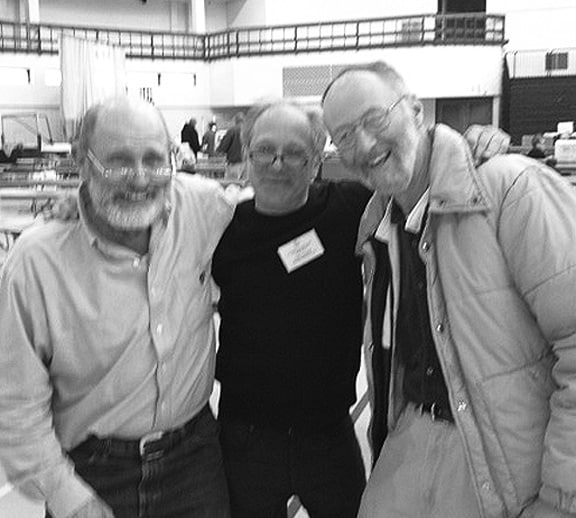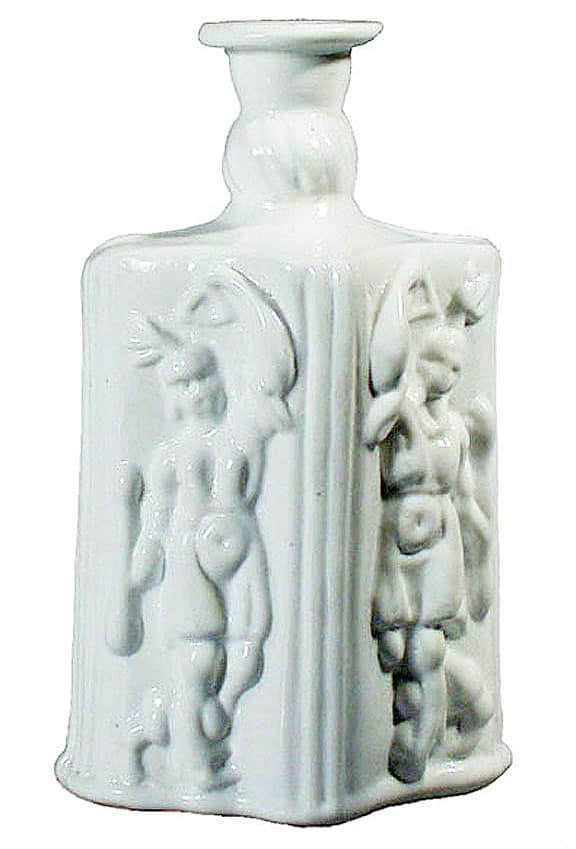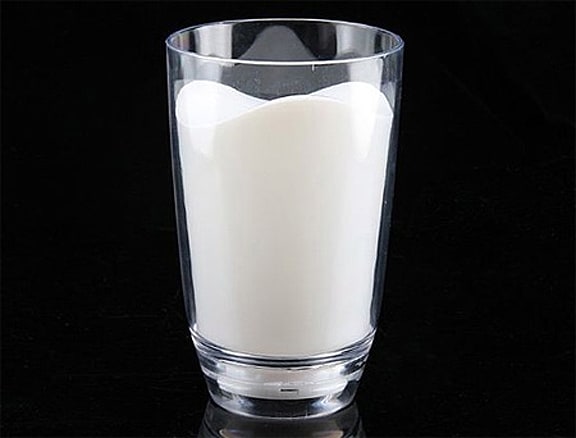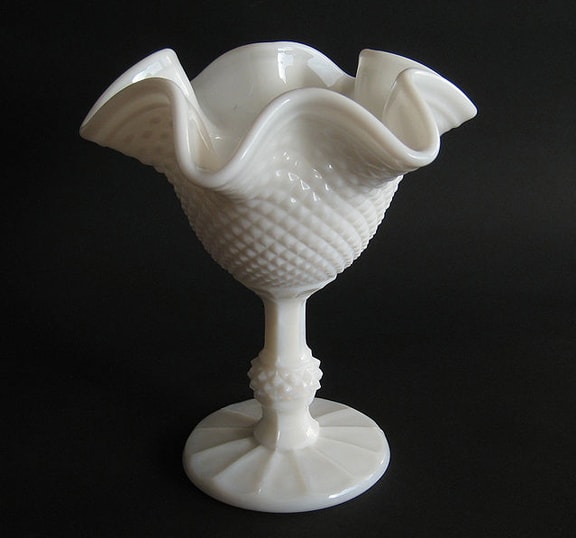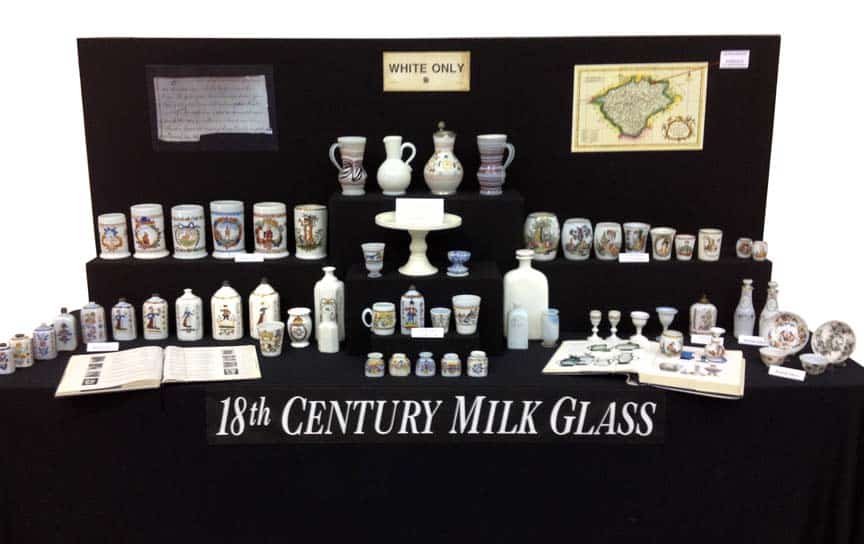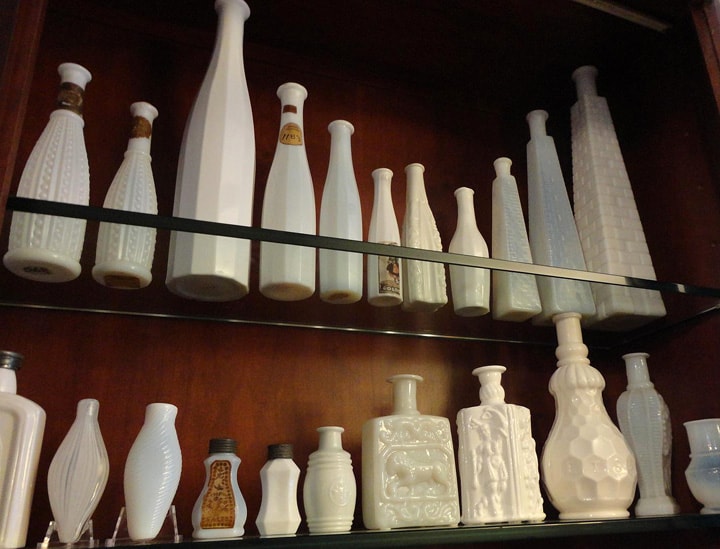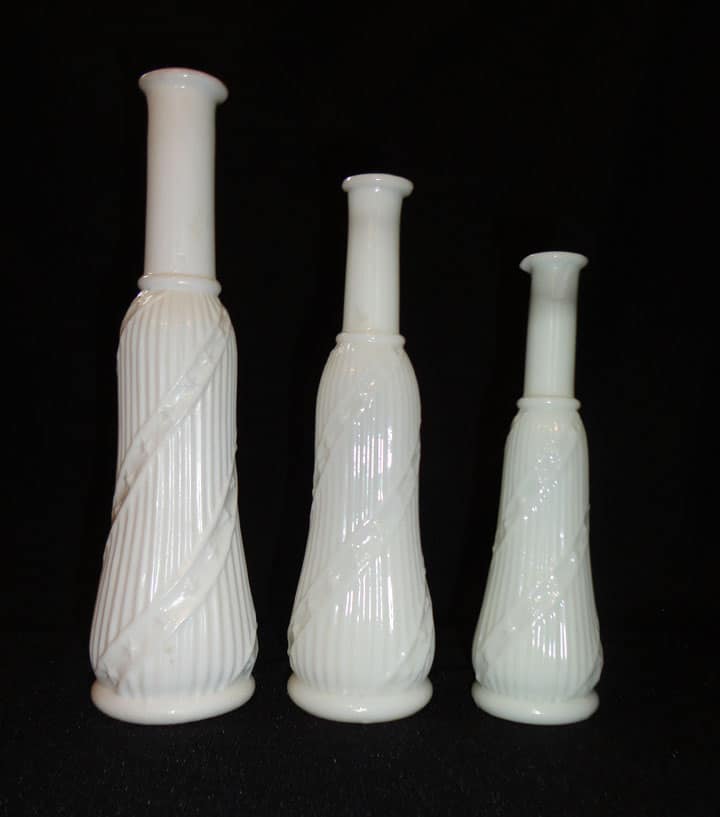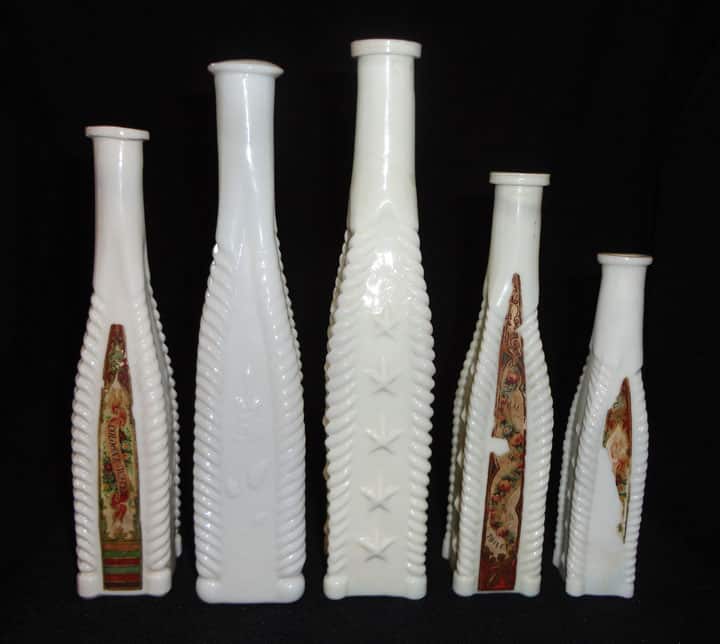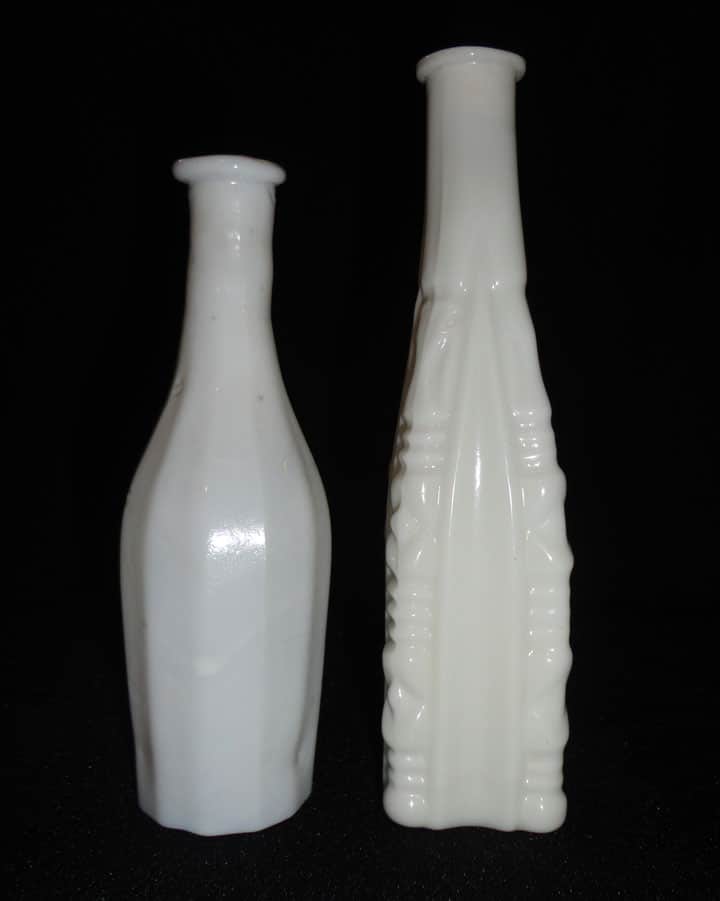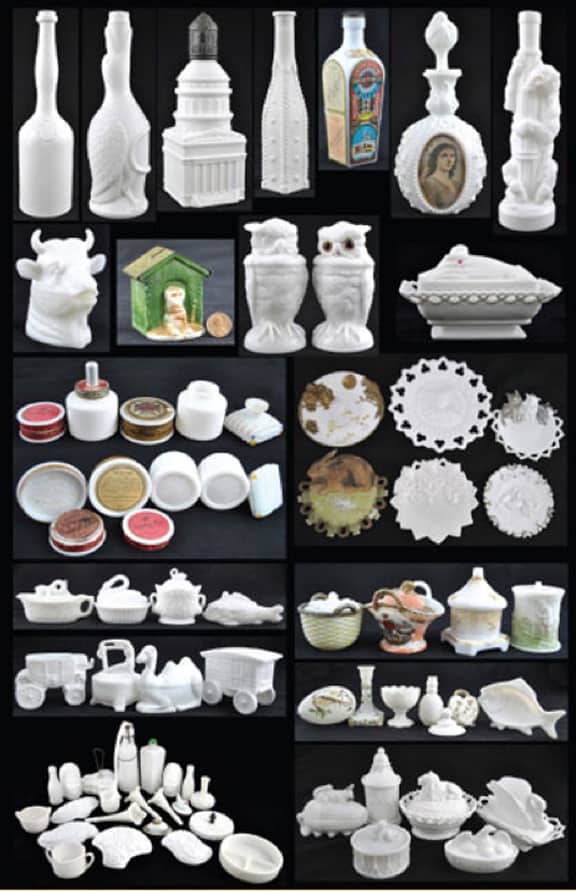Gary Katzen Milk Glass Collection
30 May 2013
Read Part 2: Why White? or How the %$#@! did you choose that Category?
![]() I first met Gary Katzen online, a year ago June when he sent me some incredible pictures of milk glass bottles on his shelves (see further below). He was asking if I might be interested in one of his Bunker Hill Monument colognes as he heard I had a color run.
I first met Gary Katzen online, a year ago June when he sent me some incredible pictures of milk glass bottles on his shelves (see further below). He was asking if I might be interested in one of his Bunker Hill Monument colognes as he heard I had a color run.
I immediately took an ‘online’ liking to Gary as he seemed extremely knowledgeable, personable and passionate about milk glass. He next teased me with a killer picture of a ‘Dancing Indian‘ cologne pictured above from his collection. He noted it as being the whitest of white opaque glass and attributed the piece to Stanger glass works; circa 1848-1853. Wow, what a piece!
Milk glass is an opaque or translucent, milky white or colored glass, blown or pressed into a wide variety of shapes. First made in Venice in the 16th century, colors include blue, pink, yellow, brown, black, and the white that led to its popular name.
19th-century glass makers called milky white opaque glass “opal glass“. The name milk glass is relatively recent. The white color is achieved through the addition of an opacifier, e.g. tin dioxide or bone ash.
Made into decorative dinnerware, lamps, vases, and costume jewelry, milk glass was highly popular during the fin de siecle. Pieces made for the wealthy of the Gilded Age are known for their delicacy and beauty in color and design, while Depression glass pieces of the 1930s and ’40s are less so. Perhaps one of the most famous uses of opal glass (or at least the most viewed example) was for the four faces of the information booth clock at Grand Central Terminal in Manhattan. [Wikipedia]
This past March I was able to meet Gary finally as my dealer table at the 2013 Baltimore Bottle Show was in close proximity to his outstanding 18th Century Milk Glass display (see above). The display also won a ‘People’s Favorite” award. I know it was my favorite.
Anyway, I had a few pictures from Gary nested away. Hope you enjoy.
Gary Katzen Milk Glass Collection
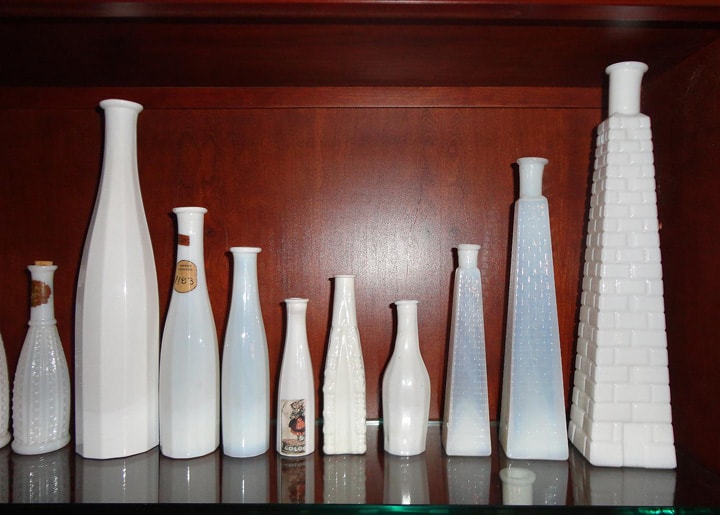
Look at those great milk glass colognes (left) and the Bunker Hill Monument examples from the Gary Katzen Collection. Two monuments are fiery opalescent (second and third from right). The 12” example on the far right is opaque.
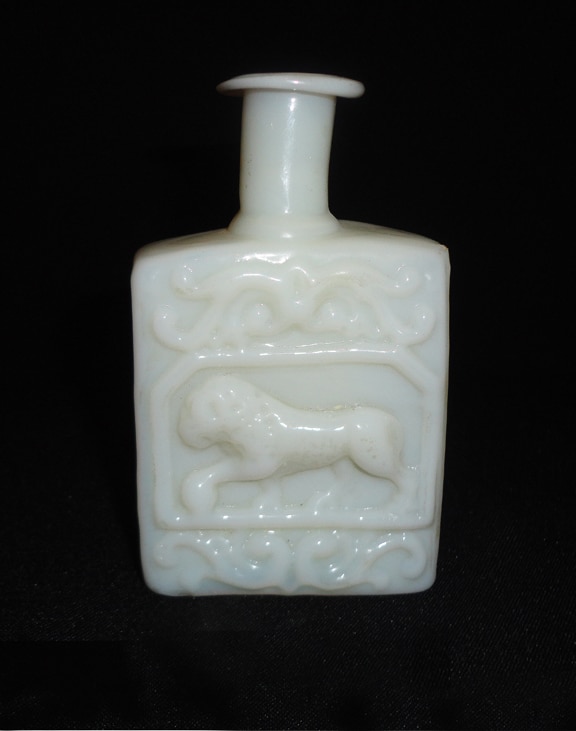
Lion cologne. Contrary to popular belief this is not Sandwich but rather a South Jersey/Kensington PA. piece most likely produced by Solomon Stanger III at the Stanger Glass Works or another South Jersey Glass house around 1848-1860. The Free Will Glass Mfg. Co. (Williamstown Glass works) 1840-1854 listed this mold in their catalog as well. T.W Dyott listed one of these as early as 1833. There are at least four mold variants known, this example has what appears to be a slugged out Greek Key pattern on the indented side panels. – Gary Katzen Collection
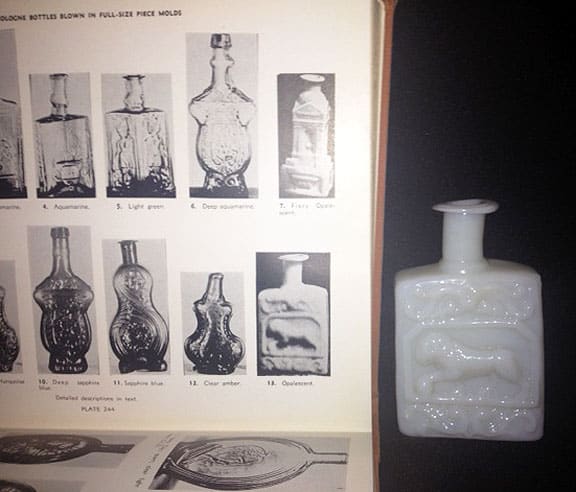
This Lion cologne is pictured in McKearin’s American Glass plate 244 #13. Look at the lip (see above) – Gary Katzen
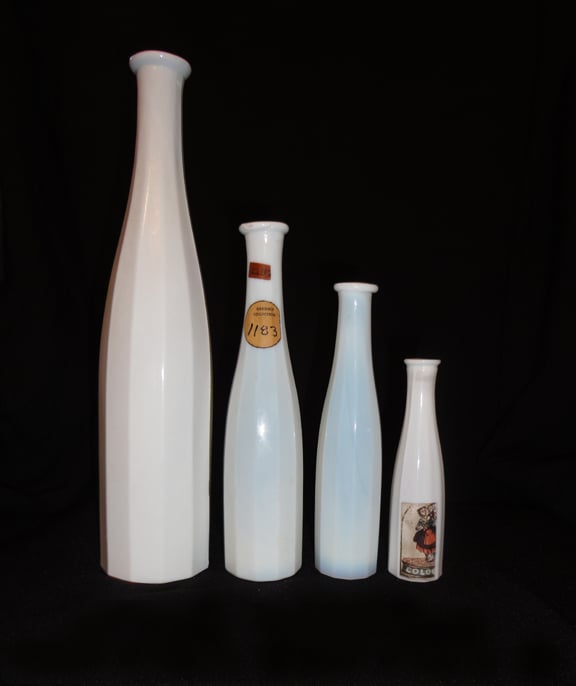
12 Sided colognes opaque and fiery opalescent 4” – 11”, Sandwich glass works ca. 1870 – Gary Katzen Collection (second from left – Jeff and Holly Noordsy listing: COLOGNE BOTTLE, fiery opalescent milk glass, 12-sided, smooth base, 7 5/8″H, tooled mouth, mint. American, probably blown at the Boston and Sandwich Glass Works, Sandwich, MA, C. 1870, ex. Charles B. Gardner collection.
